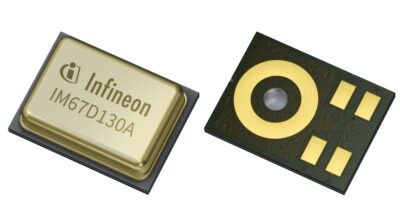Embedded FPGA IP, low power, multi-core, voice-enabled SoCs and endpoint artificial intelligence (AI) from Quicklogic is now available from Mouser Electronics, following a global distribution agreement between the developers and the distributor.
The agreement means that Mouser now stocks QuickLogic’s EOS S3 microcontroller- and FPGA-based platform and its QuickFeather development kit.
The EOS S3 sensor processing platform is a multi-core SoC that enables an array of concurrent sensor applications, from basic to computationally demanding algorithms for smartphone, wearable, and IoT devices. EOS S3 integrates a low-power Arm Cortex-M4F microcontroller sub system and embedded FPGA (eFPGA) fabric, with optional sensory low power sound detect (LPSD) for on-chip voice recognition. The heterogeneous architecture enables designers to partition their software and use cases across the variety of cores to optimise a system for lowest power consumption.
The QuickFeather development kit is a small form factor system which enables the next generation of low power machine learning (ML) -capable IoT devices, explains Mouser. It is powered by the EOS S3 and is based on open source hardware. It is compatible with the Adafruit Feather form factor. The board is built around an open source software ecosystem, including SymbiFlow FPGA tools, Zephyr and FreeRTOS operating systems and Renode. Third-party software is available for sensor processing, voice, and AI/ML use cases, including SensiML and Google’s TensorFlow Lite for microcontrollers.
Mouser is a global authorised distributor, offering a wide selection of the newest semiconductors and electronic components which are in stock and ready to ship. To help speed customers’ designs, Mouser’s website hosts an extensive library of technical resources, including a Technical Resource Centre, along with product data sheets, supplier-specific reference designs, application notes, technical design information, engineering tools and other helpful information.
Mouser Electronics’ website is available in multiple languages and currencies and features more than five million products from over 1,100 manufacturer brands. Mouser offers 27 support locations worldwide and ships to 223 countries/territories from its distribution facilities in the Dallas, Texas, metro area in the US.







